The #10 cans for food storage are more than just a big tin can; they’re handy for keeping food safe and fresh.
If you want to plan meals and keep food for a long time, knowing about can sizes, like the #10 can, is helpful. Its versatility and enormous capacity have made it a go-to for many people.
#10 cans are popular among preppers, home chefs, and restaurants, but what exactly is it? From its material makeup to its ideal usage, we delve into all the intricate details you need to know. Read on to learn more about its use for large food storage systems.
In This Guide
What Is a Number 10 Can?
A number 10 can is a large, cylindrical metal container commonly used for storing and preserving food in bulk. Used primarily for commercial food storage, this can is a staple in various industries.
It measures approximately 6.25 inches in diameter and 7 inches in height, with a volume of roughly 109 ounces (3.1 liters). When empty, it weighs approximately about 9 ounces.
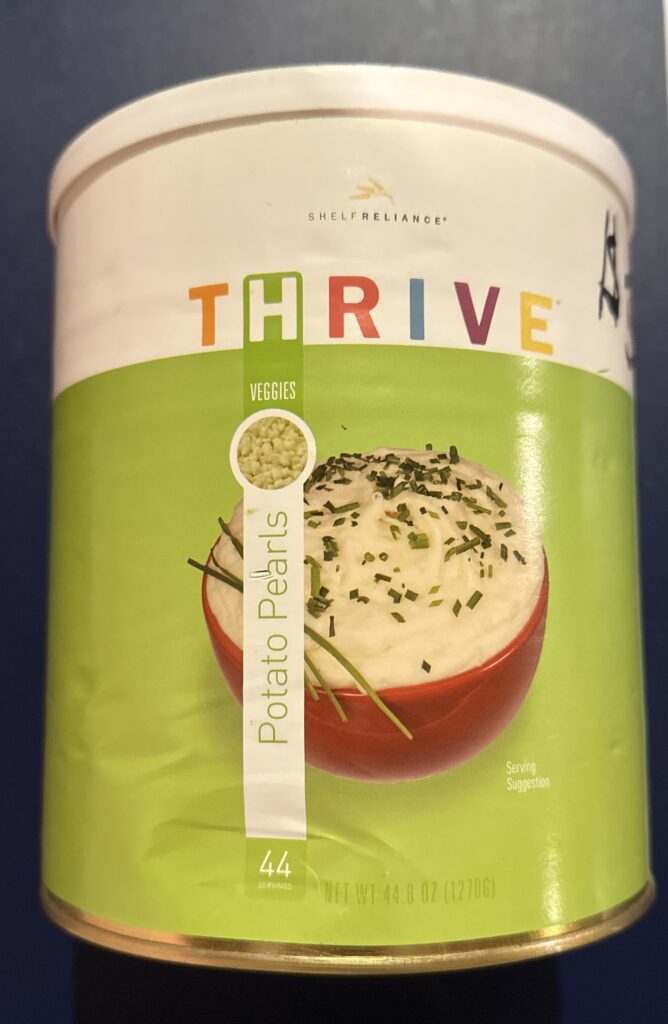
You can use it to hold dry goods such as flour, sugar, and grains.
The origins of the #10 can date back to the early 20th century when it was first introduced as a convenient and efficient way to package food for the military.
Today, the number 10 can have become popular due to its versatility and durability. It can hold various food items, including fruits, vegetables, soups, sauces, and dry goods like pasta and grains.
Plus, the can’s airtight seal helps preserve the food’s quality and freshness, making it a reliable option for long-term food storage and emergency preparedness.
What Are #10 Cans Made Of?
Number 10 cans are usually made of tinplate. Tinplate, also known as electrolytic tin-coated steel, is produced using electrolytic deposition. This involves coating a thin layer of tin onto a sheet of steel, creating a strong, durable material resistant to rust and corrosion. This construction material is particularly useful for long-term food preservation.
To protect the food inside, commercially packed #10 cans are lined with either acrylic or R enamel. This lining prevents the food from touching the inside of the can, which can cause corrosion and affect the taste and quality of the food. However, this is commonly used when the food contains liquids.
Capacity
The capacity of a number 10 can is substantial, making it ideal for storing large quantities of food.
But how many ounces are in a number 10 can? A #10 can hold approximately 105 to 117 ounces of food. That’s why it’s ideal for storing large quantities, particularly for commercial or long-term storage.
When purchasing food in a #10 can, the weight on the label will reflect the net weight of the contents, not the volume.
Some foods, such as grains or dehydrated fruits and vegetables, may have a higher volume-to-weight ratio. This allows you to store more of the product in the same amount of space.
On the other hand, denser foods, like canned meats or sauces, may take up more space for the same weight.
To determine how much food you’ll get from a #10 can, consider the serving size and number of servings per container listed on the label. This can help you gauge how much food is available and how long it may last based on your consumption habits.
How Are #10 Cans Produced?
The production of #10 cans involves cutting a sheet of tin-coated steel into circles, forming the circles into the shape of a can, and lining the can with a food-grade coating. Quality control in production ensures the can’s integrity for long-term storage.
You can fill the can with the desired food product and seal it with a lid. The lid is typically made from the same material as the can and is crimped onto the top to create a secure seal.
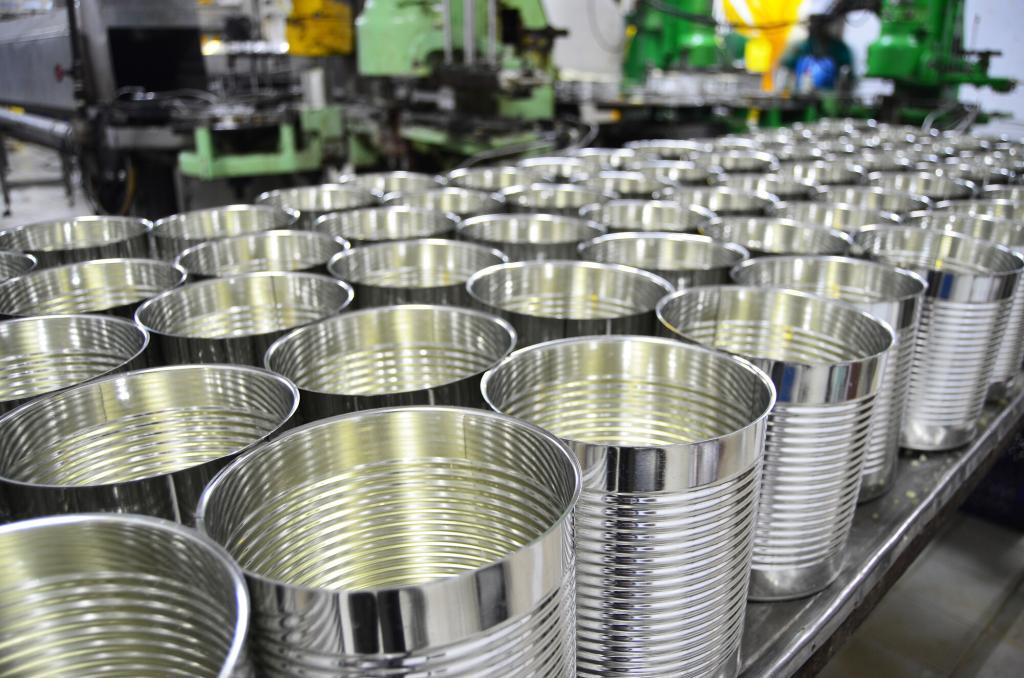
Comparing the Common Can Sizes
Unlike the smaller 12-ounce cans, a #10 can provides more value in bulk storage. This size is particularly popular among large families and foodservice operations.
Always consider can sizes when buying canned products for cooking, meal planning, or storing your pantry. The size of your can affects how much food it can hold and may change how you measure your ingredients.
Here are the different can sizes to compare with the number 10 can.
| Can Size | Food Volume | Food Weight |
| 1 | 1 ¼ cups | 10 ½ to 12 ounces |
| 2 | 3 ½ cups | 20 ounces |
| 2.5 | 3 ½ cups | 27 to 29 ounces |
| 3 | 5 ¾ cups | 51 ounces |
| 10 | 3 quarts | 6 ½ pounds to 7 pounds & 5 ounces |
| 300 | 1 ¾ cups | 14 to 16 ounces |
| 303 | 2 cups | 16 to 17 ounces |
Source: UNL Food Nebraska Extension
As you can see from the table, a #10 can hold around 105 ounces or approximately 13 cups of content. This makes it an excellent option for storing and preserving large quantities of food.
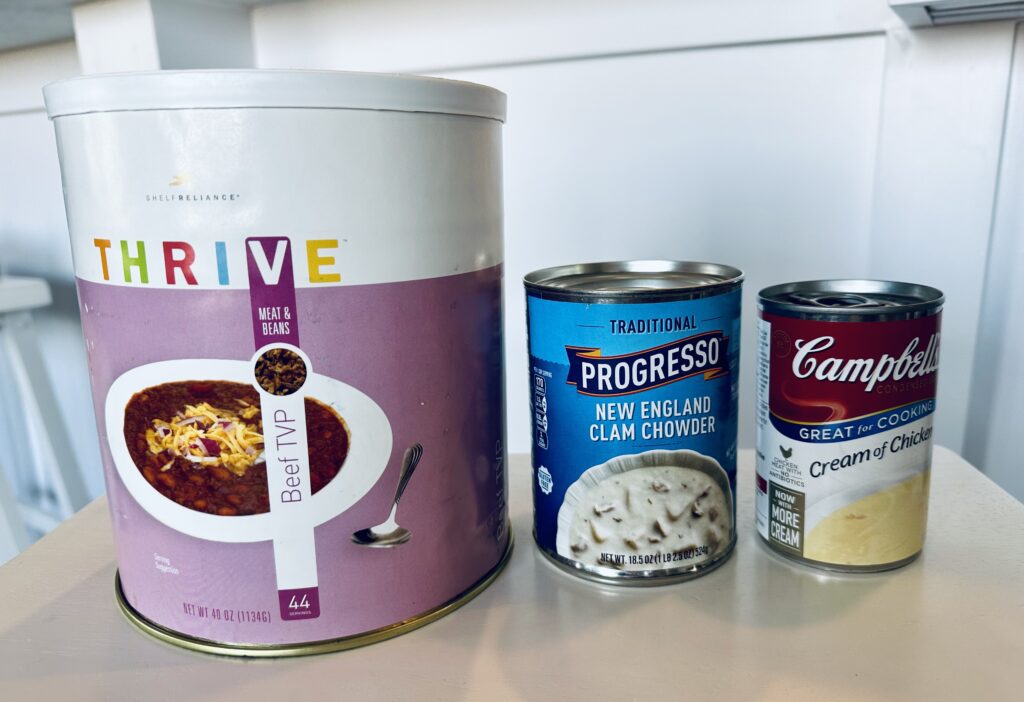
Why Use a #10 Can for Storage?
The #10 can can protect food against external elements like air and moisture, extending its shelf life. With its robust design, it’s an ideal choice for both emergency and everyday use.
Here are some of the key reasons why people opt for the number 10 cans when it comes to food storage:
- Long Shelf Life. When properly stored, number 10 cans can keep food fresh and safe for several years. The airtight seal and protective metal lining prevents contamination and spoilage.
- Economical. Buying food in bulk is generally more cost-effective than purchasing smaller quantities. Using number 10 cans allows you to take advantage of these savings, as they are designed to store large amounts of food efficiently.
- Durability. The sturdy metal construction of number 10 cans ensures they can withstand transportation and storage without being damaged. This means the food inside remains well-protected, and you can stack the cans without crushing the contents.
- Environmentally Friendly. Number 10 cans are recyclable, which helps reduce waste in landfills. Their long shelf life and storing food in bulk contribute to reducing food waste and packaging waste.
- Versatility. #10 cans are suitable for storing various food items, including fruits, vegetables, meats, and prepared meals, makingthem an excellent choice for both home and commercial use.
- Emergency Preparedness. In a natural disaster or other emergencies, having a stockpile of non-perishable food items is essential. Number 10 cans provide a reliable and long-lasting storage solution that can help ensure you have enough food on hand during an emergency.
How To Store Number 10 Cans
While #10 cans can last for several years, proper storage is essential to get the most of their shelf-life. Knowing the right environment and conditions for these cans can not only save you space but also preserve the nutritional value of your stored goods.
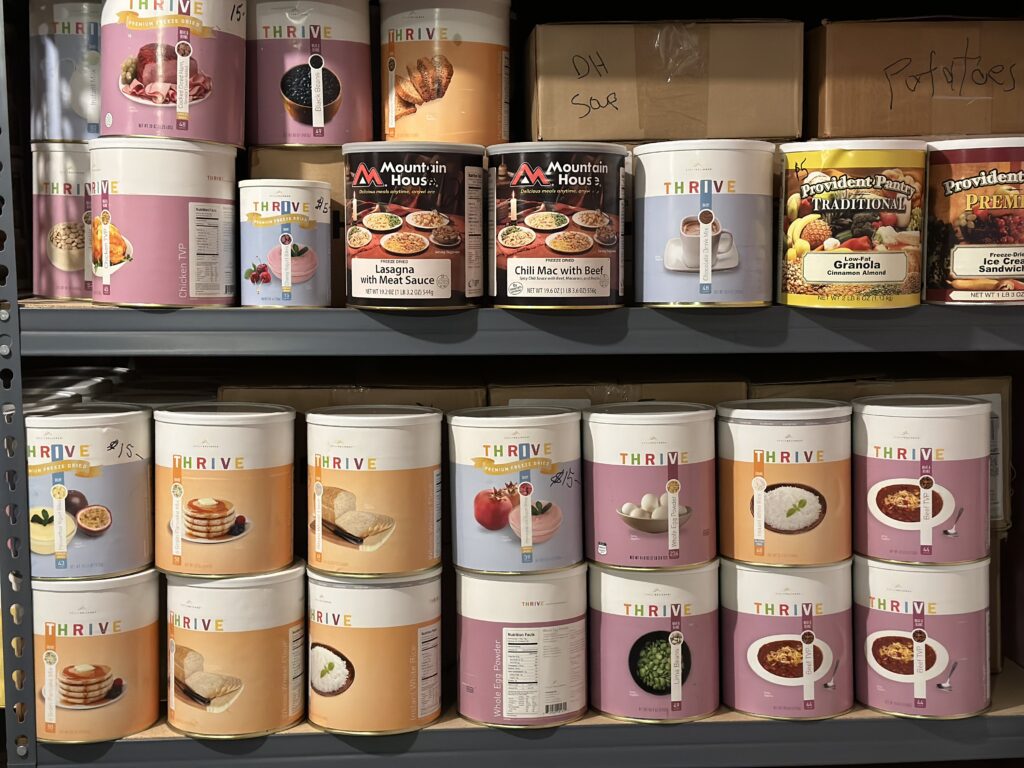
Temperature and Humidity
To maximize the shelf life of your canned food, store number 10 cans in a cool, dry place, with a temperature between 50°F (10°C) and 70°F (21°C). A cool, dark place is generally best for long-term storage.
Maintaining stable temperature conditions ensures the contents remain in optimal quality. High temperatures and humidity can accelerate the deterioration of the food and cause the cans to rust.
Pest Control
Ensure your storage area is clean and free of pests as rodents and insects can damage the cans and compromise the food inside.
The metal construction is usually sufficient to deter most pests. Additional measures like sealed containers can provide an extra layer of protection. Also, regularly inspect your storage area for signs of infestation and take appropriate measures to address any issues.
Rotation
Regularly rotating your stock prevents food from spoiling. Consider keeping an inventory system for an effective rotation.
Use the first-in, first-out (FIFO) method. Place new cans behind older ones, ensuring you use the oldest ones first. This helps maintain the freshness and quality of your stored food.
How To Open and Use Number 10 Cans
10 cans are a popular choice for storing bulk foods and emergency supplies, but many people are unsure how to properly open and utilize them.
Armed with the right tools and techniques, you can easily access the contents and extend the life of your stored goods.Now let’s explore how to properly open and use a #10 can.
Using a Can Opener
Use a manual or electric can opener to open your cans. Be careful when handling the can, as the edges can be sharp once opened. After opening, the contents should be used or transferred for maximum freshness.
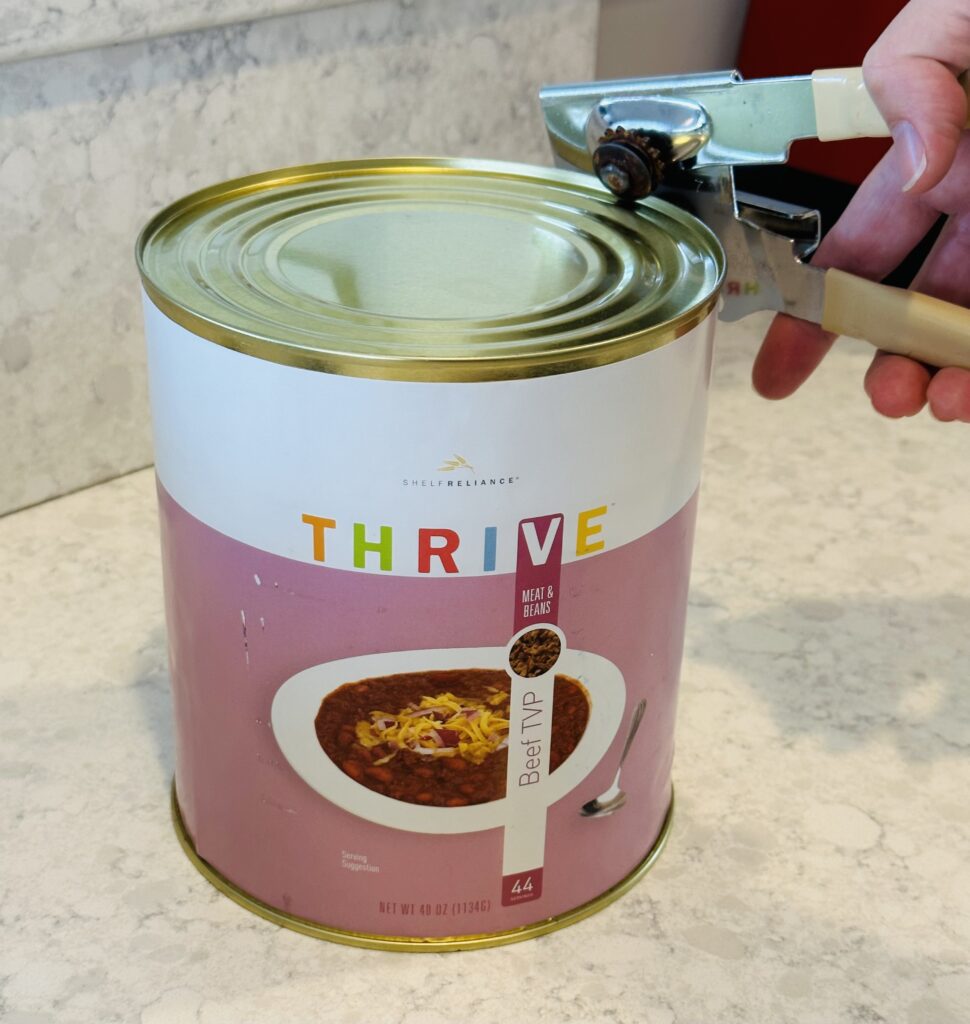
Repackaging and Storage
Transfer food into an airtight container for storage. This will help maintain the food’s freshness and prevent spoilage. Using vacuum-sealed bags is a popular choice for repackaging.
Prepare the Food
Most foods in number 10 cans are pre-cooked and just require reheating. Depending on the type of food in the can, you may need to drain excess liquid, rinse, or rehydrate before incorporating it into your recipe. Follow the specific preparation instructions for the food item.
Use the food from the Number 10 can in your recipe as directed. You can serve some foods, like canned fruits or vegetables, directly from the can after draining and rinsing, if necessary.
Store Any Leftovers
Storing leftovers properly minimizes waste and extends usability. If you have any leftovers, store them in an airtight container in the refrigerator. Consume the leftovers within a few days to ensure they remain fresh and safe.
Popular Brands and Where to Buy
Knowing where to buy and which brands to trust is essential. Several popular brands offer food in number 10 cans, such as Mountain House, and Augason Farms. You can find these cans at warehouse stores, specialty food retailers, and online platforms like Amazon.
FAQs About Number 10 Cans
How long can food last in a number 10 can?
An unopened number 10 can can preserve food for several years, often ranging from 2 to 5 years or even more, depending on the type of food and storage conditions.
How do I store opened number 10 cans?
If you’ve already opened your #10 can, transfer unused contents to airtight containers and store them in the refrigerator. While they may last several days when refrigerated, it’s best to check for any signs of spoilage before consuming them.
What types of food are stored in number 10 cans?
Number 10 cans are commonly used for preserving and storing various food items such as fruits, vegetables, meats, soups, sauces, and even dry foods like grains and beans.

Are #10 cans recyclable?
Yes, number 10 cans are typically made of steel or aluminum, which are both recyclable. Be sure to rinse the can thoroughly to remove any food residue before recycling.
Can I use a number 10 can for home cooking or meal preparation?
Number 10 cans are suitable for home cooking and meal preparation, especially when cooking large quantities of food.
They can be a cost-effective and convenient option for those who like to batch cook or prepare meals in advance. However, remember that the large size may be impractical for smaller households or storing leftovers.
Key Takeaways:
Number 10 cans provide an efficient, economical, and environmentally friendly way to store food for the long term. From its sturdy construction to its multipurpose utility, the #10 can is a versatile storage solution.
By understanding their history, uses, and benefits, you can make informed decisions about incorporating these cans into your food storage plan.
What are some of your favorite food items that come in a #10 can?
ABOUT THE AUTHOR
Bill Montgomery is the co-founder of Modern Day Prepping. He and his wife Angie have been dedicated to the self-reliant lifestyle since 2008. When he’s not working on the homestead, he enjoys tinkering with electronics and family movie nights with Angie and their two boys. To learn more about Bill, visit the About Us page.
If you want to know how to keep your family safe in the modern world, visit Privacy For Patriots, a sister site that Bill started to help fellow Patriots stay “off the radar” from bad actors and big tech.


0 Comments